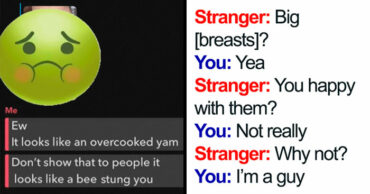
YouTube is atwitter about some very prominent advertisers – Adidas, Cadbury, Deutsche Bank, Hewlett- Packard, Mars, and Lidl — who decided to stop paying for advertising because YouTube had been found running their ads on channels where the content was very questionable. That video content was mostly children being recorded partially or fully undressed, and some of the comments were clearly from pedophiles.
The sticking point is that many of those videos were uploaded by children who had no intent to draw attention from the deviants. But children, innocent creatures that they are, do not understand the dangers of the real world which in today’s global society includes the Internet. That leaves us asking whether YouTube, advertisers, pedophiles, the channel owners, or the Internet as a whole should bear the burden of responsibility for the disturbing use of these videos and channels.
Ever since the Harvey Weinstein sexual assault allegations made the issue of sexual assault against women by men in power the flavor of the month for the media, moralists have come out of the woodwork making their case for the underlying reasons for degenerate behavior. The sexual revolution of the 60’s and 70’s has been cited by old and young, while some opt to blame advertisers and the Internet.
What nobody wants to admit is that sexual behavior and sexual norms have changed with the advances in technology. Sexting used to be a serious topic; not so much anymore. New York politician Anthony Weiner makes the news cycle for sending pictures of his junk to an underage female, but ignored are the thousands, if not millions, of adult men doing the same thing yet not being reported by the receiver. Not to single out men, though that is trendy, female teachers take it to the next level with teenage boys and their stories vanish within a few days. Apparently we are close to rock bottom on the Permissible Acts of Sexuality chasm, but you never know.
Blame technology. That is an easy escape from the real source of the problem, which is the people who use it and are supposed to control it. We are not talking about YouTube or Twitter, or SnapChat (which modified its app so content is deleted once the chat session is ended) but about parental control and adult use of every piece of Internet technology. The lost concept of personal responsibility, the idea that just because you can, you should, needs to be carefully thought out rather than posted or Tweeted. The idea that there is a future, that there is more to the world than your solitary existence.
One of the now deleted channels that had more than 8 million subscribers had a pleasant parting message to YouTube. The owner of the channel could afford to in many ways, including monetarily. He reached that 8 million number because people of (apparently) all ages wanted to see the next posted video. There are only a few reasons for this mob behavior: the videos were reasonably innocent, children made up a majority of the viewers who can’t read the comments, or there are more than a million pedophiles who go looking for this type of content. Add your own possibility to the list, but whatever the reason the owner of the channel did what every company and advertiser does — meet the demand of the public.
Businesses have been sexualizing advertising for decades. It is no secret, but what is a secret is the silence that accompanies the moral objection to an increasing sexualized culture. Issues such as teen pregnancy and the decline of marriage are discussed without an open reference to children who are raised in a society that allows everything and questions nothing when it comes to the issue of sex. The more controversial a sexual taboo is, the more mainstream it becomes, and the silent majority remains silent. The more mainstream it becomes, the greater the likelihood there will be a YouTube channel that feeds the frenzy. The Internet as a whole appeals to the most minority of minorities because it gives them a voice. As time passes, the smallest of groups gets the attention of the world.
It seems we’re back to technology again. But somebody has to turn on the power, upload or allow the video to be uploaded, view or allow the video to be viewed. Clicking the upvote or the button to subscribe to a channel is an individual decision not controlled by advertisers, channel owners, or YouTube. The end result is it is easier to blame someone else for our decisions — and our silence.
 Follow Us
Follow Us





